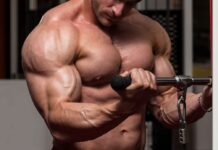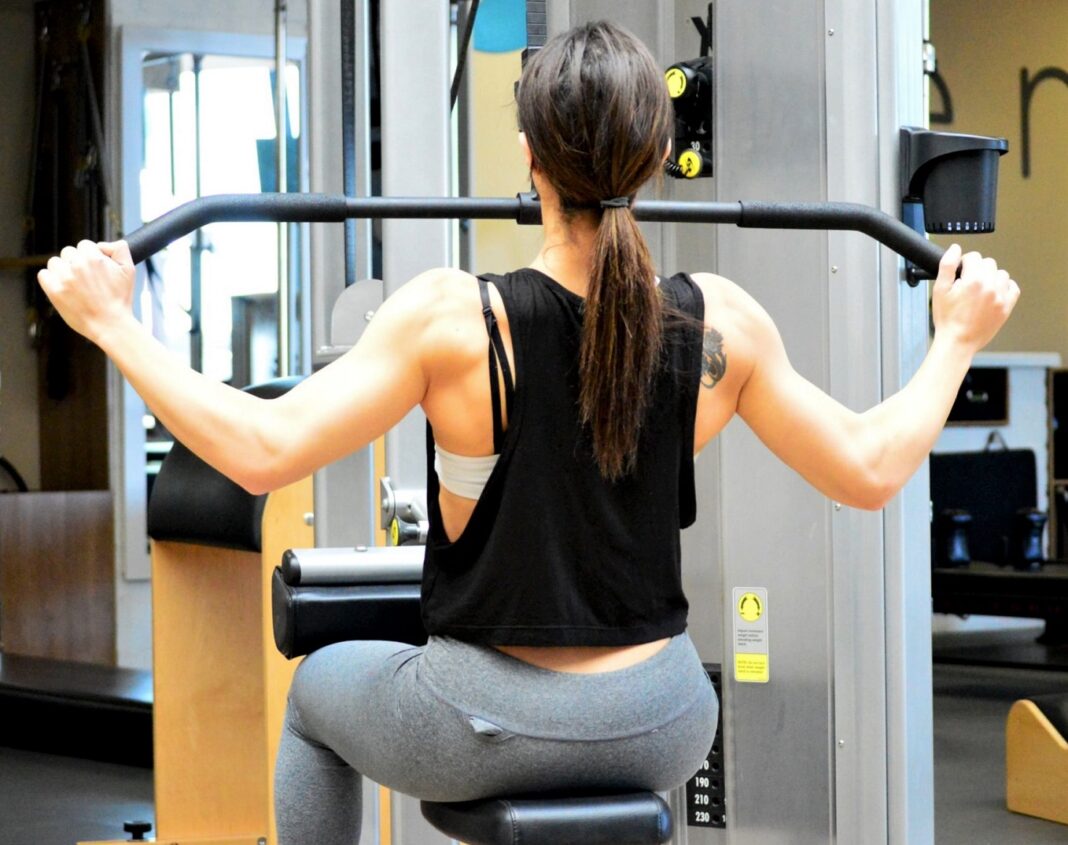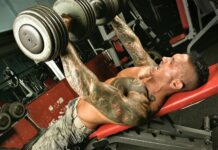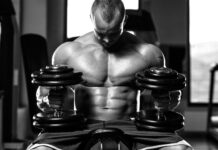Workout machines are not replacing free weights. Still, there’s no denying that some machines have advantages over simpler tools. Just as a chainsaw is more efficient than an axe, some exercises performed with cables and cams have clear advantages over their barbell or dumbbell equivalents. This is generally because some machines stress your muscles with resistance more thoroughly than free weights can.
What follows are seven common machine exercises that have distinct advantages over their free-weight equivalents. Each focuses on a different body part. Only hamstrings and calves are excluded, and only because nearly ever exercise for those areas is performed with a machine. This is not an argument against the seven free-weight equivalents of the following machine exercises. Instead, this guide highlights the advantages of some machines so you can better understand why and when to include them in your weight-training routine.
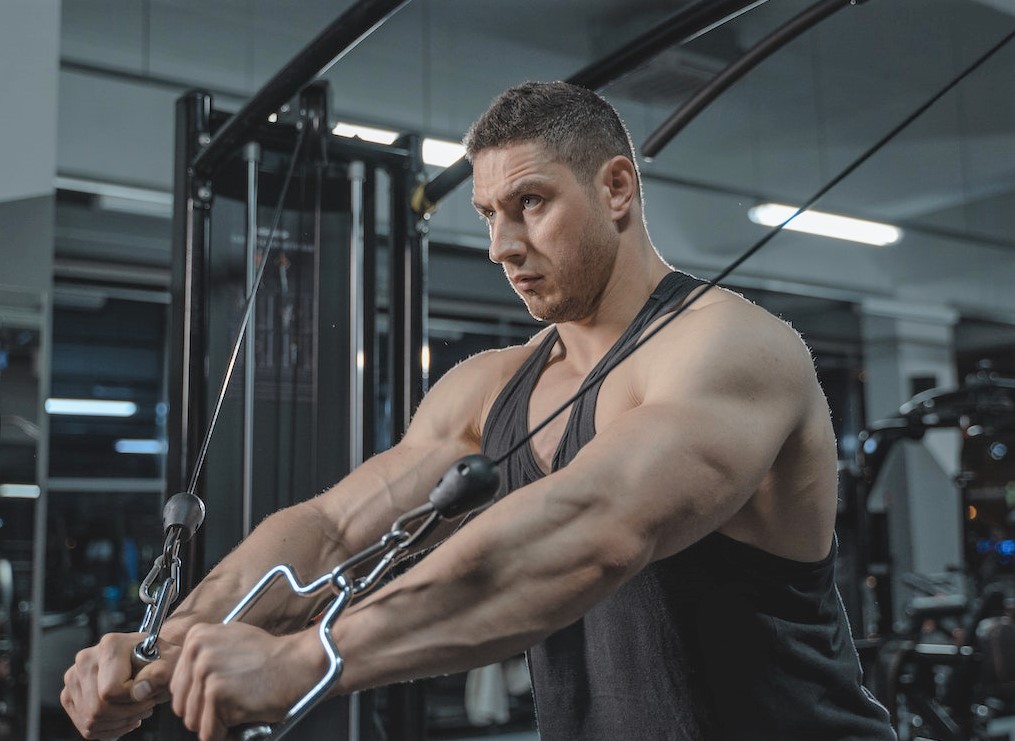
MACHINE FLYE
This is not merely a mechanical version of a dumbbell flye. No, it’s a gravity-buster. All weights are always pulled by gravity in one direction—straight down to the floor. So any motion in a dumbbell flye that isn’t moving the dumbbells straight up but is instead propelling them closer together in an arc isn’t doing much to tax your chest muscles. You’re losing resistance and, therefore, tension on your pectorals.
That brings us to the machine flye, which could be a pec-deck, cable crossover, or any similar mechanical motion. Because a machine flye’s resistance comes from a vertical weight stack which is always fighting gravity during its rise, there is tension throughout the movement. This is why in EMG studies monitoring pectoral muscle activation both the cable crossover and the pec-deck flye rank significantly higher than the dumbbell flye.
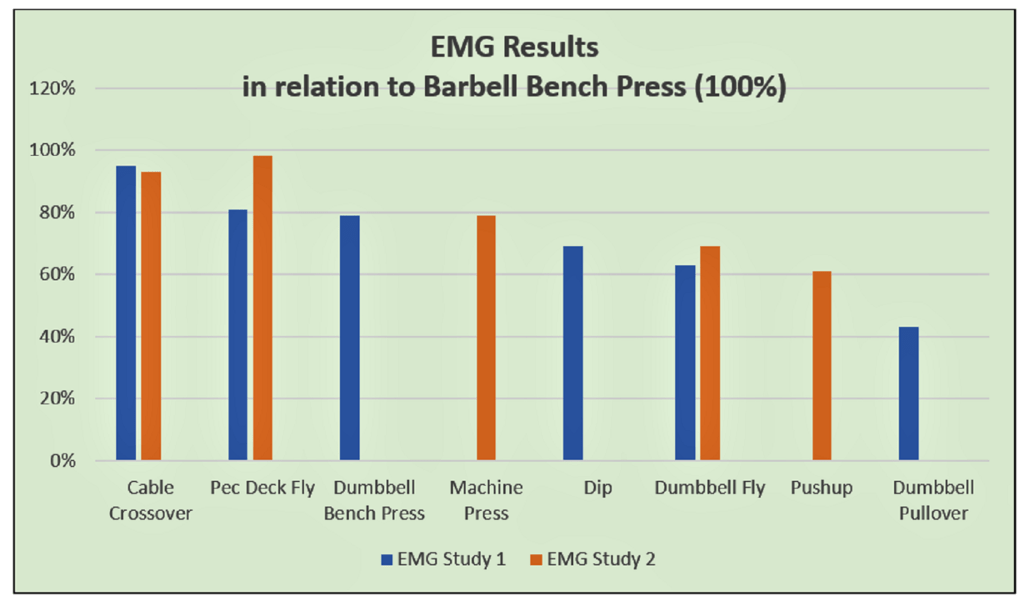
CABLE OR MACHINE SIDE LATERAL
Most of the stress of a dumbbell side lateral arrives late to the party. It comes during the top halves of reps, when you’re raising your arms more and moving them outward less. Remember, gravity always rules, so it’s the most vertical (less horizontal) part of the movement that applies the most stress to the medial deltoid. As with a machine flye, a mechanical side lateral’s resistance goes straight up and down in the form of a weight stack. Therefore, tension is applied to your middle delts equally throughout the movement.
SMITH MACHINE SQUAT
We know, we know. The Smith machine squat is seen as the beta version of the very alpha barbell squat. There are some reading this now who would never dare squat in a Smith machine instead of a power rack for fear they might lose their hardcore cred. But here us out on this one. Gravity is no advantage this time. In fact, the sliding rails of a Smith machine only reduce the pull of gravity when compared to a free-weight squat.
The machine advantages are the safety and the unique stress. Because pins for racking the bar are always just a turn of the wrist away, the Smith lets you more safely squat heavy without a spotter. Also, the machine forces the bar to travel straight up and down (or slightly backwards), and this allows you to alter the position of your feet—from beneath your hips to far out in front, and from heels together to sumo-wide—and still maintain proper form. Do these advantages make Smith machine squats better than barbell squats? No. But they may make them better for you, at least in some situations, as champion bodybuilders from 6-time Mr. Olympia Dorian Yates to 4-time Classic Physique Mr. Olympia Chris Bumstead discovered.
For much more on Smith machine exercises check out: Smith Machine Workouts: Ultimate Guide
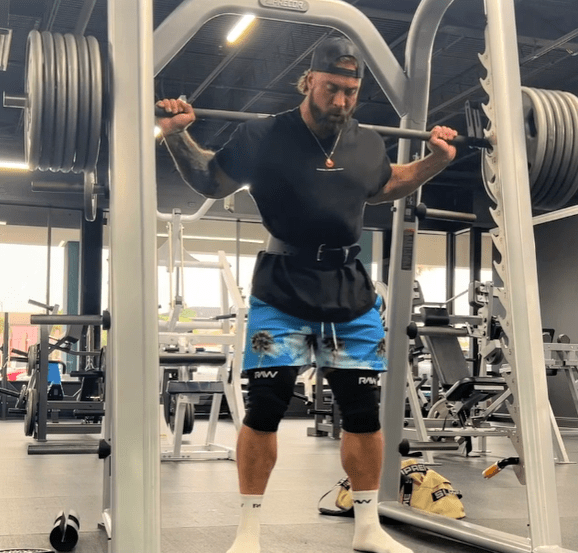
PULLDOWN
A pulldown has four distinct advantages over an unassisted pull-up. First, it allows you to more precisely calibrate the resistance. If you can’t get 10 reps of pull-ups, you can certainly select a pulldown weight that lets you get 10. Second, you can more easily perform a drop set; just move the pin. Third, it’s easier to change the stress with various handles.
Finally, you’re able to focus more on back contractions. While few people can repeatedly pause and flex in the “up” position of an unassisted pull-up, everyone can find a weight that lets them do so in a pulldown’s “down” position. Again, this isn’t an argument against pull-ups, which is a great back exercise, but understand the advantages you can gain from pulldowns and choose your exercises accordingly.
TRICEPS CABLE EXTENSION
When doing a free-weight triceps extension, the closer you get to the top position the less you’re battling gravity. That might seen illogical, because, of course, the weight is at its highest then. Also, you may have trouble locking out; it’s probably where you’re fail on your last rep. However, it’s true, because the weight (and your hand) travels in an arc. Just before contractions, the weight is traveling horizontal as much as vertical, losing some triceps tension. By doing these with a cable, you’re fighting the gravitational pull of the weight stack from start to finish. What’s more, mechanical triceps exercises, including pushdowns, allow you to flex your triceps against tension at contractions.
MACHINE CURL
Preacher curls are another exercise diminished by gravity. As with the triceps extension, it’s the top halves of reps when stress is lessened. In fact, the weight is actually moving down at the very top of the movement when curling on a 45-degree preacher bench, eliminating virtually all tension from the biceps. One way to counter this is to use chains or bands, thus increasing resistance throughout reps. Another way is to do machine curls. These typically mimic a preacher curl, but once again the resistance comes from a weight stack’s perfectly vertical rise, so the biceps are working hard from stretch to contraction.
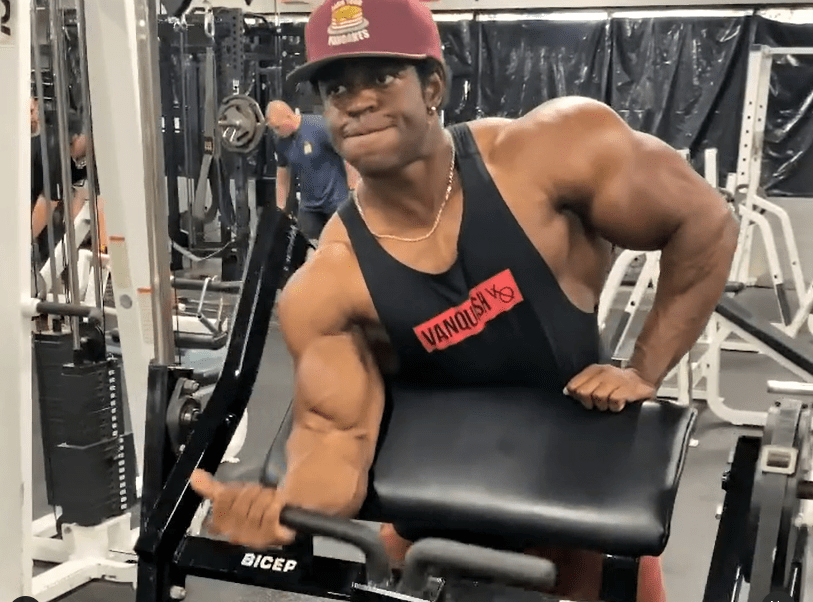
MACHINE CRUNCH
A bodyweight crunch is a short movement with virtually all of the abdominal tension at the contraction. A good crunch machine won’t lengthen the range of motion, but it will distribute the stress equally from start to finish. Once again, the weight stack combats gravity.
WORKOUT MACHINE TRAINING TIPS
◼️ Machines with weight stacks distribute stress from start to finish.
◼️ Workout machines may have safety benefits over free weights. This is especially useful when going heavy while training without a spotter.
◼️ On the other hand, free-weight or bodyweight exercises generally provide for a freer range of motion, and the need to balance the weight may stimulate more growth.
◼️ Typically, you should include both machine and free-weight exercises in your workout routine.
◼️ You can strategically pair machine and free-weight lifts. For example, superset dumbbell flyes and cable crossovers or dumbbell side laterals and machine side laterals.
◼️ If you do an all-machine workout, try to include plate-loaded machines that mimic free weights, such as those in the Hammer Strength line.














